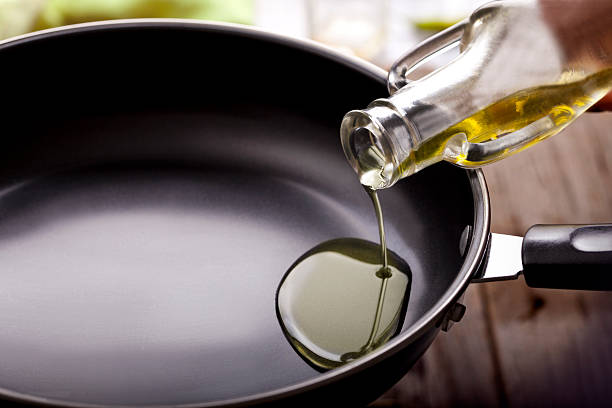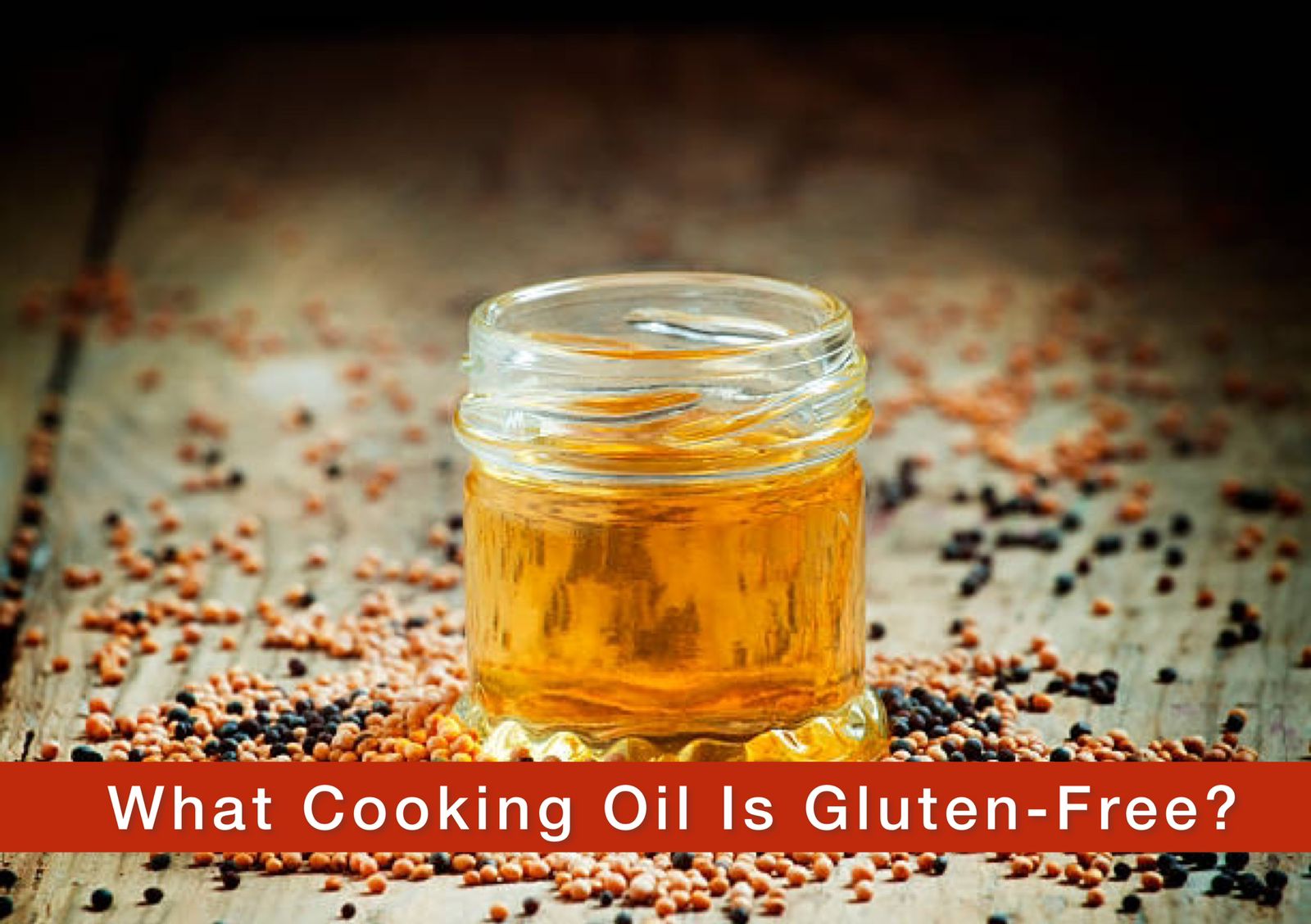|
Listen to article
Getting your Trinity Audio player ready...
|
Along the East Coast, gluten-free cuisine is growing in popularity, particularly in locations with high population density. Finding gluten-free food at your neighborhood grocery stores and eateries is now simpler than ever. But oil is one item that’s sometimes overlooked when ordering gluten-free food. Your gluten-free dish might not be gluten-free anymore if it is cooked in vegetable oil. Filler substances containing gluten may be included in vegetable oils.
In this post, we’ll be answering the question “What cooking oil is gluten-free?”

Contents
- 1 What Cooking Oil is Gluten-free?
- 2 Is Oil Gluten-Free?
- 3 What Cooking Oil Are Gluten-Free?
- 4 Gluten-Free Labeling: What to Look for in Cooking Oils
- 5 Cooking Oil Storage and Cross-Contamination Prevention
- 6 Possibility of Gluten In Cooking Oils Is As Follows
- 7 Tips to Get the Right Oil For Cooking
- 8 Will Cooking Oil Adversely Impact Your Health?
- 9 The Bottom Line on Gluten-Free Cooking Oils
What Cooking Oil is Gluten-free?
Canola oil, sunflower oil, olive oil, and vegetable oil are a few types of oils that are gluten-free.
Is Oil Gluten-Free?
Yes, by nature, the majority of cooking oils are gluten-free.
Canola oil, sunflower oil, olive oil, and vegetable oil are a few types of oils that are gluten-free. However, during the manufacturing process, any oil may come into touch with gluten; for this reason, we always advise reading labels and putting your trust in items that are certified gluten-free, particularly if they have flavorings or additives. Please contact the manufacturers with any inquiries.
While oil itself is usually gluten-free, make sure to enquire if the kitchen uses a separate fryer for gluten-free food when ordering anything fried in oil at restaurants. This is because some foods cooked in oil, like breaded meats, may not be gluten-free and would result in cross-contact problems.
What Cooking Oil Are Gluten-Free?
Avocado Oil
With a smoke point of 500 degrees, avocado oil is a healthy, gluten-free, and excellent cooking, sautéing, and frying oil that’s perfect for frying prawns, chicken, or anything else your taste buds desire. Avocado oil, which is high in heart-healthy fats and antioxidants, has been shown to lower cholesterol and promote heart health.

Coconut Oil
The star of the gluten-free, fry-friendly oil world is coconut oil. Coconut oil is resistant to heat since 90% of its fatty acids are saturated, therefore it may be continuously fried for eight hours without losing its quality. When purchased in large quantities, it is reasonably priced and leaves the meal you’re frying tasting mild.

Olive Oil
Olive oil is a fantastic gluten-free option for frying and is regarded as one of the healthiest fats on the planet. Remember that its aroma and taste might not withstand prolonged contact to heat and might permeate your meals. Olive oil doesn’t have to be limited to salad dressings because of its high content of monounsaturated fatty acids and its exceptional heat resistance.

Gluten-Free Labeling: What to Look for in Cooking Oils
The U.S. Food and Drug Administration (FDA) has established strict guidelines for label claims about gluten-free products since 2014. This guarantees the accuracy and consistency of “gluten-free” claims made on food goods. Although producers are allowed to choose whether to use the “gluten-free” claim, it is their responsibility to follow FDA guidelines and make sure the claim is accurate.
The FDA does not support or encourage any particular third-party gluten-free certification program, even though certain manufacturers may decide to use the emblem of a program.
Here is a detailed post on best gluten-free oils to fry seafoods.
Cooking Oil Storage and Cross-Contamination Prevention
Contrary to what some sources claim, cooking using oil won’t remove or neutralize gluten from meals. The proteins that cause gluten can remain in your fryer and wait to infect other foods that you cook. Gluten-sensitive people may be in danger of cross-contamination even when they use the same fry basket for gluten-free and gluten-containing items.
- Use different baking sheets, pots, pans, colanders, strainers, and utensils for gluten-free and gluten-containing dishes to avoid this.
- Steer clear of using rolling pins, cutting boards, and wooden utensils that have come into contact with gluten.
- Keep gluten-free flours apart from flours containing gluten and use baking paper to line your trays and pans to prevent gluten-free products from getting contaminated by leftovers or crumbs.
- Foods free of gluten should be kept on the top shelf in a special section to avoid unintentional cross-contamination with gluten-containing foods.
- Lastly, make sure there is no cross-contamination by double-checking all components, especially xanthan gum, baking powder, and gluten-free flour.
Possibility of Gluten In Cooking Oils Is As Follows
Cooking Oil Is Virtually Always Gluten Free: Natural cooking oils are virtually always free of gluten because they come from naturally gluten-free sources. For instance, olive oil comes from olives, and grapeseed oil comes from grapes.
Cross Contamination: Although it is uncommon, some cooking oils can come into contact with gluten during manufacture. Those who suffer from gluten issues should carefully read labels, even if this is very uncommon. Select a pure, single-component oil in its place if the mixture contains an odd ingredient.
Since Spectrum Oil also manufactures goods containing wheat germ, it’s unclear if cross-contamination occurs throughout the manufacturing process.
Tips to Get the Right Oil For Cooking
Usually, most individuals don’t know how to cook with different types of oil. Since several oils have varying smoke points, some are good to deep fry and others are best drizzled over a salad.
Here are five factors to think about while buying cooking oil:
Smoke Point: The temperature at which oil degrades and starts to smoke is known as the smoke point. When it smokes, the heat breaks down the fat and releases harmful smoke and free radicals, which can cause cancer if consumed or inhaled. Business Insider is the source. Because avocado and canola oils have high smoke points, you can safely fry meals in them at a high temperature. But you shouldn’t heat olive oil above 300 degrees Fahrenheit.
- Avocado Oil: 500°F
- Canola Oil: 400°F
- Coconut Oil: 350°F
- Corn Oil: 450°F
- Extra Light Olive Oil: 468°F
- Extra Virgin Olive Oil: 320°F
- Grapeseed Oil: 392°F
- Peanut Oil: 450°F
- Rapeseed Oil (i.e., Canola): 400º F
- Safflower Oil: 450°F
- Sesame Oil: 410°F
- Soybean Oil: 450°F
- Sunflower Oil: 450°F
- Virgin Olive Oil: 420°F
- Walnut Oil: 320°F
Packaging: You should also think about the oil’s packaging. Treating oil like a great wine is a good idea. Compared to clear plastic bottles, the best cooking oils are packaged in darker glass bottles. The darker bottle keeps the oil from getting rancid and the glass prevents plastic particles from soaking into the oil. Oils should be stored in dark, out-of-the-way places to prevent light, heat, and oxygen from making them rancid faster.
Production: Pressure is used instead of heat by the manufacturer to extract oil when it is cold pressed. A few oils undergo expeller pressing. The fruit or seed is subjected to intense pressure during this procedure, which may or may not entail heat. Recall that heat denatures oil and modifies its nutritional composition. Cold-pressed oils have the highest nutritional content.
Taste: Oil can improve a lot of food’s flavor. Drizzling some extra virgin olive oil over spaghetti or a green salad will enhance its flavor and make it stand out. Coconut oil is used in many recipes for “healthy” baked goods. I don’t like the taste of this oil, even if it works well for baking. Certain oils, such as sesame oil, have a rich, nutty flavor that complements Asian food. I wouldn’t, however, mix sesame oil with my raspberry cupcakes. The sweetness of the dish would be overwhelmed by the sesame oil.
Sustainability: The effects of food processing on the environment should be known to any ethical consumer. I genuinely care about the Earth and want to act in a way that is best for the planet, even though I am not an expert on this particular subject. For instance, palm oil contributes to the destruction of rainforests. Not even the beloved olive oil, avocado, and coconut are sustainable. When comparing different oils, look for environmental promises, certifications, and assurances from reliable organizations on the product’s label.
Will Cooking Oil Adversely Impact Your Health?
Other oils are regarded as fats, even if gluten-free cooking oils—like other oils—come from seeds, nuts, vegetables, and fruits. But as we now know, not all fats are unhealthy. For optimal function, your body requires fat.
Omega-3 fatty acids can support overall health by reducing inflammation in the body. It is recommended that you consume heart-healthy oils such as avocado and olive oil that contain omega-3 fatty acids if you have inflammation, aches, pains, autoimmune illnesses, or other gut-related conditions and are following a gluten-free diet. Although it is not a major source of omega-3s, unrefined coconut oil is nonetheless a healthy fat with many nutritional advantages.
Conversely, Americans overconsume omega-6 fatty acids, despite the fact that these are also needed fats. An excess of omega-6 fatty acids in the diet can cause inflammation and illness. The oils derived from corn, sunflower, safflower, cottonseed, and soybean are rich in omega-6 fatty acids.
When cooking at home or dining out, stay away from cheap, refined oils like canola, maize, soy, and sunflower (you can find these oils in fast food restaurants).

The Bottom Line on Gluten-Free Cooking Oils
Always check the labels and contact the manufacturer to ensure that the cooking oils you buy are gluten-free; this is crucial if you have any reservations about a certain ingredient or additive.
Use different oils for different purposes (frying as opposed to drizzling), and consider how each oil is produced, tastes, is packaged, and how it affects the environment.
Check out other posts:
Does Soft Serve Have Gluten? Simple Recipe to Make Gluten-free Soft Serve at Home



2 comments